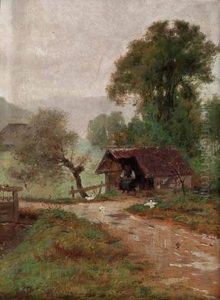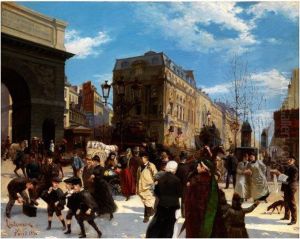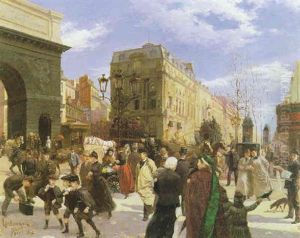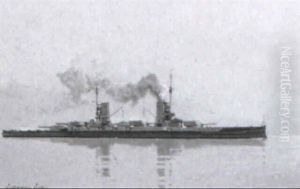Manfred Lindemann-Frommel Paintings
Manfred Lindemann-Frommel was a German landscape painter and etcher, born on December 6, 1852, in Berlin, Germany. He was part of a family with a rich artistic heritage; his father was the painter Karl Lindemann-Frommel, and his uncle was the landscape painter Adolf Friedrich Erdmann von Menzel, who had a significant influence on Manfred’s artistic development.
Lindemann-Frommel showed an early aptitude for art and studied under his father before attending the Prussian Academy of Arts in Berlin. He was particularly inspired by the aesthetic of the Italian landscape, which became a recurring theme in his work throughout his life. This fascination with Italy was shared by many Northern European artists of the time, who were drawn to the country's classical heritage and picturesque scenery.
In his early career, Lindemann-Frommel traveled extensively in Italy, especially drawn to the regions of Tuscany and Rome. His works from this period reflect his ability to capture the unique light and atmosphere of the Italian countryside. He was adept at both oil painting and etching, with the latter allowing him to express the fine details of the scenery he so loved.
The artist's reputation grew as he continued to exhibit his works in various German cities and beyond. His paintings often depicted serene Italian landscapes, characterized by rolling hills, ancient ruins, and rural life. They were marked by a harmonious composition and a subtle, yet effective use of color that conveyed the warmth and tranquility of the Italian landscape.
During his career, Lindemann-Frommel became a member of the Berlin Artists' Association and was also involved with the Munich Secession, a group of artists who sought greater artistic freedom and innovation outside the traditional academic circles. His work was recognized with several awards and honors in Germany and across Europe.
Manfred Lindemann-Frommel continued to paint well into his later years, maintaining a dedication to his craft and the landscapes that inspired him. He passed away on May 15, 1939, in Marzabotto, Italy. His legacy is that of a landscape artist who captured the enduring beauty of the Italian countryside and influenced the appreciation of such scenery in German art.









